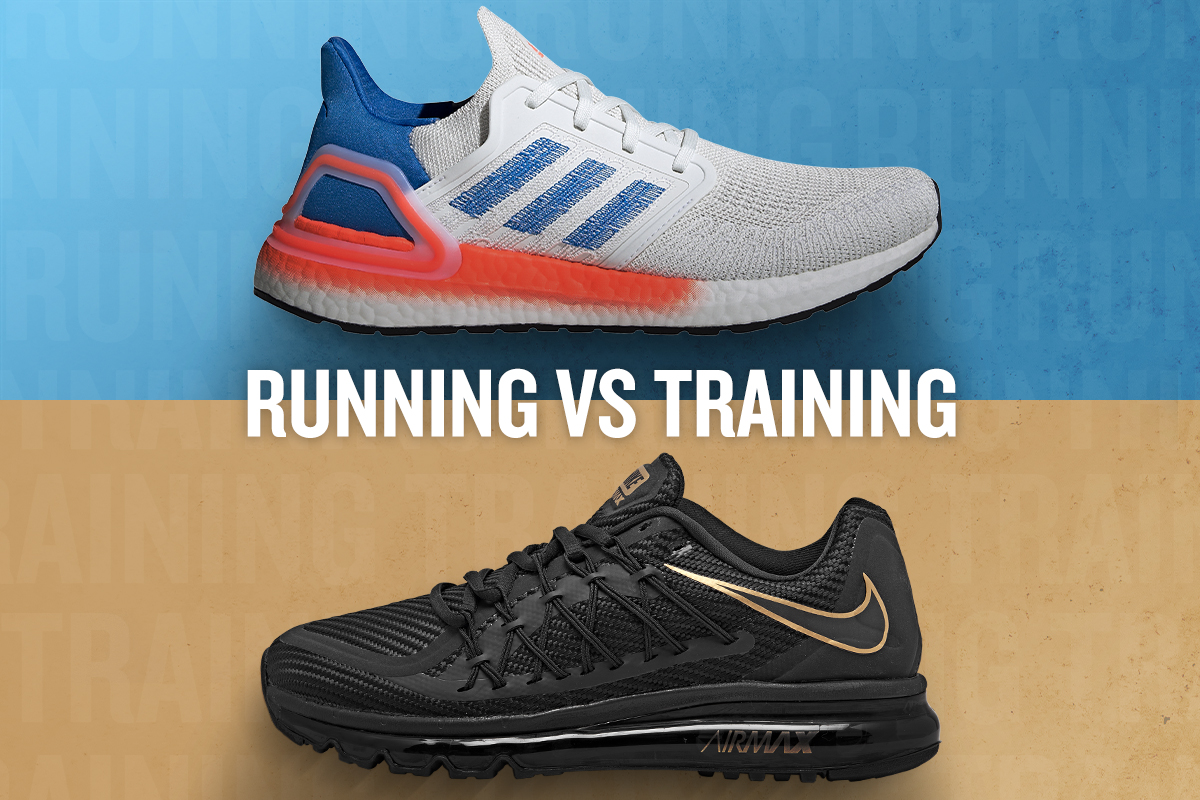

Featured
What Is The Heel Drop In Running Shoes
Modified: August 18, 2023
Learn about the heel drop in running shoes, its importance in proper biomechanics, and why it's a featured aspect to consider for runners.
Introduction
When it comes to running shoes, there are several factors to consider, such as cushioning, stability, and support. One crucial component that often gets overlooked is the heel drop. What exactly is the heel drop, and why is it important in running shoes? In this article, we will explore the concept of heel drop and its impact on running form and performance.
The heel drop, also known as the heel-to-toe offset or the drop differential, refers to the height difference between the heel and the toe of a running shoe. It is typically measured in millimeters and can have a significant influence on how a runner’s foot strikes the ground during the gait cycle. Understanding the heel drop and its implications can help runners make informed decisions when selecting the most appropriate running shoes for their needs.
The heel drop plays a vital role in how the foot transitions from the initial contact with the ground (heel strike) to the push-off phase (toe-off). Different heel drop measurements can affect the distribution of forces throughout the lower extremities and impact running form and efficiency. This, in turn, can have implications for performance, comfort, and injury prevention.
Finding the right heel drop for your running needs is not a one-size-fits-all approach. Factors such as foot mechanics, running style, and personal preferences all come into play. Some runners may thrive with a higher heel drop, while others may prefer a lower one. It’s crucial to understand the effects of different heel drop measurements and to consider individual circumstances when choosing the right running shoe.
In the following sections, we will delve deeper into how heel drop affects running form, explore the common measurements of heel drop found in running shoes, discuss the pros and cons of different heel drops, and provide some tips on transitioning to a new heel drop. By the end of this article, you will have a better grasp of the importance of heel drop in running shoes and be equipped with the knowledge to make an informed decision when selecting your next pair of running shoes.
Definition of Heel Drop
Before we delve deeper into the importance of heel drop in running shoes, it’s essential to have a clear understanding of what exactly heel drop is. In simple terms, heel drop refers to the height difference between the heel and the toe of a running shoe. It is measured in millimeters and plays a significant role in how a runner’s foot strikes the ground during the gait cycle.
To visualize the concept of heel drop, imagine a line drawn from the highest point of the heel to the highest point of the toe in a running shoe. The vertical distance between these two points is the heel drop measurement. For example, if the heel is 30mm higher than the toe, the shoe has a heel drop of 30mm.
Traditionally, running shoes had a higher heel drop, promoting a heel strike landing. However, as the understanding of running mechanics evolved, shoe manufacturers began to develop shoes with lower heel drops. This shift was influenced by the belief that a more natural stride and a midfoot or forefoot strike pattern could help enhance running efficiency and reduce the risk of certain injuries.
It’s important to note that heel drop is not the same as cushioning or the thickness of the sole. While a shoe with a higher heel drop may often have thicker cushioning in the heel, there are exceptions. Shoe manufacturers can design shoes with varying levels of cushioning while maintaining the same heel drop measurement.
Understanding the significance of heel drop in running shoes is crucial for runners who want to optimize their running form, reduce the risk of injuries, and improve performance. The next section will delve into how heel drop impacts running form and the various factors to consider when choosing the correct heel drop measurement for your individual needs.
Importance of Heel Drop in Running Shoes
The heel drop in running shoes plays a crucial role in how a runner’s foot strikes the ground and influences running form and performance. Understanding and selecting the appropriate heel drop for your needs is essential for optimizing comfort, reducing the risk of injuries, and enhancing overall running experience.
One of the primary reasons why heel drop is important is its impact on foot strike patterns. A higher heel drop tends to encourage a heel strike landing, where the heel makes initial contact with the ground. This type of foot strike is often associated with a more extended and forceful heel-to-toe transition. It can provide increased stability and shock absorption for runners who naturally land on their heels.
On the other hand, a lower heel drop promotes a more midfoot or forefoot strike pattern, where the runner lands closer to the middle or front of the foot. This type of foot strike is generally associated with a quicker turnover and a more efficient transfer of energy during the running gait. It can enhance speed and agility while reducing the impact on joints and muscles.
Choosing the right heel drop for your running style and biomechanics is crucial for preventing injuries. For example, runners with a history of Achilles tendon issues or calf strains may benefit from a slightly higher heel drop, as it can help alleviate stress on these areas during the heel strike phase. Conversely, runners with strong lower leg muscles and a more efficient running form may find that a lower heel drop allows them to maximize their performance potential with less risk of injury.
It’s important to note that there is no one-size-fits-all approach when it comes to heel drop. Each runner is unique, and factors such as foot mechanics, running style, and personal preferences must be considered. Experimenting with different heel drop measurements can help you identify the optimal shoe configuration for your individual needs.
In the next section, we will explore how heel drop affects running form in more detail, providing insights into the biomechanics and the pros and cons of different heel drop measurements. This knowledge will empower you to make an informed decision when selecting the right heel drop for your running shoes.
How Heel Drop Affects Running Form
The heel drop of running shoes has a direct impact on running form, influencing how a runner’s foot strikes the ground and facilitating the transition through the gait cycle. Understanding how different heel drop measurements affect running form is crucial for selecting the most suitable shoes and optimizing performance.
A higher heel drop, typically found in traditional running shoes, encourages a heel strike landing, where the heel makes initial contact with the ground. When the foot lands on the heel, it creates a braking effect as the body moves forward. This can be beneficial for runners who have a natural heel strike and require extra cushioning and stability in the rearfoot area.
However, a higher heel drop can also lead to a longer stride length, increased braking forces, and potentially slower running speeds. It may also contribute to a more pronounced overstride, where the foot lands too far in front of the center of mass. Overstriding can increase the risk of various injuries, including shin splints and knee pain.
In contrast, a lower heel drop promotes a midfoot or forefoot strike pattern, where the foot lands closer to the middle or front part of the foot. This is commonly associated with a more efficient transfer of energy from the landing to the push-off phase. It allows for a quicker stride turnover and a more natural running form, reducing the impact forces on the body.
A lower heel drop can encourage a more upright posture, engaging the core and utilizing the body’s natural shock absorption mechanisms. This can enhance running efficiency and reduce the risk of injuries associated with excessive impact on the joints and soft tissues. However, transitioning to a lower heel drop requires an adjustment period and may not be suitable for all runners.
It’s important to note that running form is multifaceted, and heel drop alone does not dictate good or bad form. Every runner is unique, and factors such as muscle strength, flexibility, and body mechanics should also be taken into account. Regular strength training, flexibility exercises, and proper running technique can all contribute to improving running form, regardless of the heel drop of the shoes.
In the next section, we will explore the common heel drop measurements found in running shoes and discuss the pros and cons of different heel drops. This information will provide further insights into how to choose the most suitable heel drop for your needs and preferences.
Finding the Right Heel Drop for Your Needs
Finding the right heel drop for your running shoes is essential for optimizing comfort, preventing injuries, and maximizing performance. While there is no one-size-fits-all approach, considering certain factors can help guide you towards the most suitable heel drop for your individual needs and preferences.
Understanding your running style and biomechanics is a good starting point. Are you a heel striker, a midfoot striker, or a forefoot striker? Observing your natural foot strike pattern can provide valuable insights into the type of heel drop that may work best for you. If you tend to land on your heels, a slightly higher heel drop may provide the cushioning and stability you need. If you naturally land on your midfoot or forefoot, a lower heel drop may promote a more efficient running gait.
It’s also important to consider any underlying foot or leg issues you may have. Do you have a history of Achilles tendon issues, calf strains, shin splints, or knee pain? These conditions may influence the ideal heel drop for your shoes. For example, runners with Achilles tendon problems may benefit from a slightly higher heel drop to reduce stress on the tendon during heel strike.
Furthermore, take into account your running goals and the type of terrain you typically run on. If you primarily run on trails or uneven surfaces, a lower heel drop may provide better stability and flexibility, allowing for quicker adjustments to changes in terrain. If you are training for longer distances or ultramarathons, a higher heel drop may offer more cushioning and fatigue resistance.
Another aspect to consider is the shoe’s overall cushioning and support. Some running shoes with a lower heel drop may still provide ample cushioning and stability through other design features. It’s crucial to try on different shoes and assess how they feel during a run. Pay attention to any discomfort or pain in the feet, ankles, or knees, as these can be indicators that the heel drop may not be suitable for your needs.
Lastly, don’t be afraid to experiment and transition gradually to a different heel drop. If you’ve been running in higher heel drop shoes and want to try a lower drop, start by incorporating shorter runs with the new shoes and gradually increase the distance as your body adapts. This gradual transition allows your muscles and tendons to adjust to the new demands and helps minimize the risk of injury.
By considering factors such as your running style, biomechanics, foot and leg issues, running goals, and terrain, you can make an informed decision when selecting the right heel drop for your running shoes. Remember, finding the ideal heel drop may require some trial and error, but the benefits of improved comfort, performance, and injury prevention make it well worth the effort.
Common Heel Drop Measurements in Running Shoes
When shopping for running shoes, you will encounter various heel drop measurements. Understanding the different heel drop options and their potential effects on your running form is essential for selecting the most suitable shoes. Let’s explore some of the common heel drop measurements found in running shoes.
1. Higher Heel Drop (10-12mm+): Traditional running shoes often have a higher heel drop, typically ranging from 10mm to 12mm or even higher. This heel drop encourages a heel strike landing and provides additional cushioning and stability in the rearfoot area. These shoes are well-suited for runners who have a natural heel strike or who require extra support and shock absorption during heel contact and toe-off.
2. Moderate Heel Drop (6-8mm): Shoes with a moderate heel drop offer a balance between cushioning and responsiveness. They can accommodate various running styles and foot strike patterns. These shoes are a popular choice among runners who have a midfoot or forefoot strike or those who prefer a slightly lower heel-to-toe offset without sacrificing too much cushioning in the heel area.
3. Lower Heel Drop (0-4mm): Lower heel drop shoes aim to promote a more natural running form, often with a midfoot or forefoot strike pattern. These shoes provide a more even distribution of forces throughout the foot and lower leg, reducing the impact on joints and muscles. They can enhance running efficiency and encourage a quicker stride turnover. However, transitioning to a lower heel drop requires an adjustment period to allow the body to adapt to the different biomechanical demands.
It’s important to note that these heel drop measurements are not definitive, and there can be variations within each category. Some shoe models may have a slightly higher or lower heel drop within the general range. Also, different factors such as the shoe’s overall cushioning, midsole properties, and outsole design can influence how the heel drop feels and impacts your running experience.
When selecting running shoes, it’s crucial to try on different models with varying heel drop measurements and determine which feels the most comfortable and natural for your running style and biomechanics. Remember that the appropriate heel drop for you will depend on factors such as foot strike pattern, running goals, and any specific foot or leg issues you may have.
In the next section, we will discuss the pros and cons of different heel drops, further aiding in your decision-making process when choosing the right running shoes.
Pros and Cons of Different Heel Drops
Different heel drop measurements in running shoes come with their own advantages and disadvantages. Understanding the pros and cons of various heel drops can help you make an informed decision when selecting the right shoes for your running needs. Let’s explore the benefits and considerations for each heel drop category.
Higher Heel Drop:
- Pros: Running shoes with a higher heel drop provide extra cushioning and stability in the rearfoot area, making them suitable for runners who have a natural heel strike or who require additional shock absorption. They can also provide support for individuals with Achilles tendon issues or calf strains.
- Cons: Shoes with a higher heel drop may promote a longer stride length and increased braking forces, potentially resulting in slower running speeds. They may also contribute to a more pronounced overstride, increasing the risk of certain injuries like shin splints and knee pain.
Moderate Heel Drop:
- Pros: Running shoes with a moderate heel drop strike a balance between cushioning and responsiveness. They can accommodate various foot strike patterns and running styles, providing a versatile option for many runners.
- Cons: While there aren’t significant drawbacks to moderate heel drop shoes, some runners may find that they do not provide enough cushioning in the heel or enough responsiveness in the forefoot, depending on their individual preferences.
Lower Heel Drop:
- Pros: Lower heel drop shoes promote a more natural running form, often with a midfoot or forefoot strike pattern. They can potentially enhance running efficiency by encouraging a quicker stride turnover and reducing impact forces on the body. They may also lead to improved stability and flexibility, particularly on uneven terrains.
- Cons: Transitioning to a lower heel drop requires an adjustment period and may not be suitable for all runners, especially those with a history of Achilles tendon issues or calf strains. The lower cushioning in the heel also means less shock absorption during heel strike, which some runners may find less comfortable.
It’s important to remember that the pros and cons listed above are general considerations, and individual preferences and biomechanics may vary. It’s recommended to try out different heel drop options and assess how they feel during a run. Pay attention to any discomfort, pain, or instability in the feet, ankles, or knees, as these can indicate whether the shoe’s heel drop is suitable for your needs.
In the next section, we will explore additional factors to consider when choosing the right heel drop for your running shoes.
Factors to Consider When Choosing the Right Heel Drop
Selecting the right heel drop for your running shoes is a decision that should be based on various factors. By considering these factors, you can make an informed choice and find the heel drop that aligns with your running style, biomechanics, and personal preferences. Here are some key factors to consider:
1. Foot Strike Pattern: Take note of your natural foot strike pattern. Are you a heel striker, a midfoot striker, or a forefoot striker? Choosing a heel drop that matches your foot strike pattern can help optimize your running form.
2. Biomechanics and Body Mechanics: Consider your running style, muscle strength, and flexibility. Some runners may have stronger lower leg muscles and better body control, allowing them to benefit from a lower heel drop. Others may find that a higher heel drop provides the necessary support and cushioning for their body mechanics.
3. Running Goals: Think about your running goals and the type of terrain you typically run on. If you’re training for longer distances or running on rugged surfaces, a higher heel drop with increased cushioning may be beneficial. For speed and agility-focused workouts, a lower heel drop can enhance responsiveness and energy transfer.
4. Foot and Leg Issues: Consider any existing foot or leg issues you may have. Individuals with Achilles tendon issues or calf strains may require a slightly higher heel drop to alleviate stress on these areas. Consulting with a medical professional or a running specialist can provide valuable insights.
5. Comfort and Feel: Ultimately, the most important factor is how the shoes feel on your feet. Try on different shoes with varying heel drops and pay attention to comfort, stability, and overall feel during a run. Your comfort level is a key factor in ensuring an enjoyable running experience.
Remember that finding the right heel drop is an individual process. What works for one person may not work for another. It’s important to experiment and listen to your body. If you’re considering transitioning to a different heel drop, do it gradually, allowing your body time to adapt and adjust to the new demands.
By considering factors such as your foot strike pattern, biomechanics, running goals, and any underlying foot or leg issues, you can make an informed decision when selecting the right heel drop for your shoes. This will help ensure that your running experience is comfortable, efficient, and enjoyable.
Transitioning to a New Heel Drop
Transitioning to a new heel drop in running shoes requires a gradual and patient approach. Making a sudden switch to a significantly higher or lower heel drop can put undue stress on your muscles and joints, increasing the risk of injury. Here are some tips to help you transition smoothly to a new heel drop:
1. Gradual Progression: Start by gradually incorporating the new shoes with the different heel drop into your training routine. Begin with shorter runs or shorter distances to allow your body to adapt to the new mechanics and demands.
2. Mix and Match: During the initial transition phase, alternate between your old shoes and the new shoes with the desired heel drop. This allows your body to slowly adjust to the new heel drop while minimizing the risk of overuse or excessive strain.
3. Listen to Your Body: Pay attention to your body’s cues and adjust the length and intensity of your runs accordingly. If your muscles or joints start to feel excessively stressed or fatigued, it may be a sign that you need to reduce the volume or intensity of your training.
4. Strengthening and Mobility Exercises: Incorporate strength and mobility exercises into your training routine to support the transition. Exercises that focus on lower leg strength, foot and ankle stability, and overall body control can help prepare your muscles and joints for the new demands of the different heel drop.
5. Seek Guidance: If you’re unsure about the transition process or if you have any underlying foot or leg issues, it’s wise to consult with a running specialist or a medical professional. They can provide personalized guidance and recommend specific exercises or adjustments to help you transition smoothly.
Remember that the transition period can vary for each individual. Some runners may adapt quickly, while others may require more time. It’s essential to be patient with yourself and give your body the time it needs to adjust. Rushing the process can lead to setbacks and potential injuries.
By following these tips and being mindful of your body’s response, you can gradually transition to a new heel drop without compromising your running form or increasing the risk of injury. Embrace the process as an opportunity to improve your running technique and explore new aspects of your training.
Conclusion
Choosing the right heel drop in running shoes is a crucial decision that can significantly impact your running form, comfort, and overall performance. Understanding the concept of heel drop and considering various factors such as foot strike pattern, biomechanics, running goals, and any underlying foot or leg issues is essential for making an informed choice.
Higher heel drops offer increased cushioning and stability, making them suitable for heel strikers or those who require more support. Moderate heel drops strike a balance between cushioning and responsiveness and can accommodate a variety of foot strike patterns. Lower heel drops promote a more efficient running form and can reduce impact forces on the body but require a gradual transition for suitable adaptation.
It’s important to remember that there is no one-size-fits-all approach when it comes to heel drop. Every runner is unique, and what works for one person may not work for another. It’s recommended to try on different shoe models with varying heel drops and listen to your body’s feedback during a run. Comfort, stability, and overall feel are key factors in selecting the right heel drop for your needs.
When transitioning to a new heel drop, it’s crucial to take a gradual approach. Gradually incorporate the new shoes into your training routine, alternating with your old shoes until your body fully adapts. Strengthening and mobility exercises, along with listening to your body’s cues, can help support a smooth transition.
In conclusion, understanding the significance of heel drop in running shoes and considering the factors discussed in this article will empower you to make well-informed decisions when selecting the most suitable heel drop for your running needs. By finding the right heel drop, you can optimize your running form, enhance your comfort and performance, and reduce the risk of injuries. Embrace the journey of exploring different heel drops and enjoy the benefits of a well-suited running shoe.









